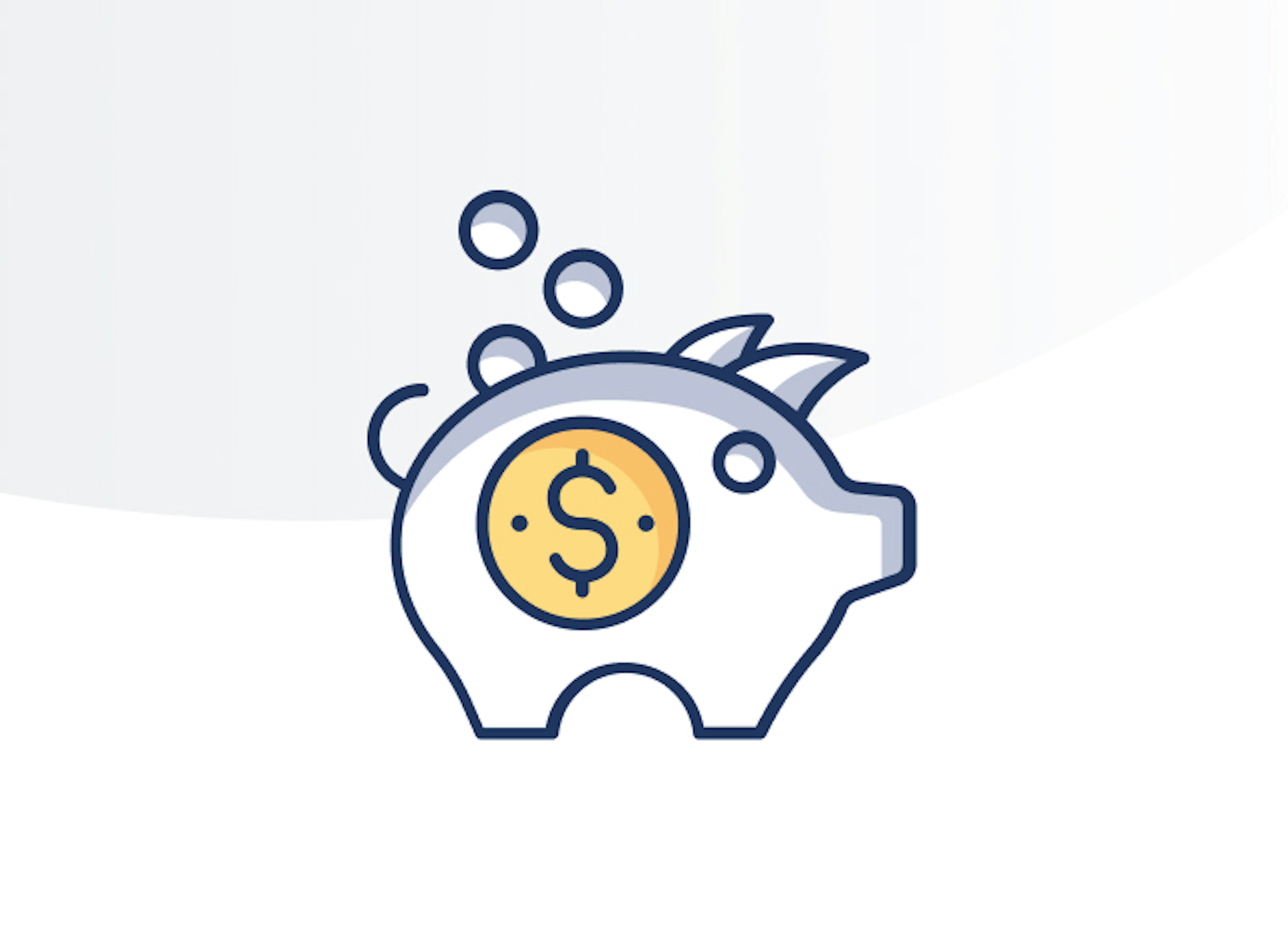Many workers in their middle age and older are taking stock of their retirement options, only to find that the outlook seems discouraging. A Gallup poll from April 2025 found that 30% of U.S. adults aged 50-64 do not have money invested in a retirement savings plan such as a 401(k), 403(b), or IRA. The median retirement savings for savers between 55 and 64 is just $185,000.
Despite this alarming data, there are strategies for older workers to increase their likelihood of retiring. Let’s review how savers age 50 and older can use their 401(k) to improve their retirement outlook.
The sooner you start saving, the easier it may be to reach your retirement goals
There’s a popular proverb that goes, “The best time to plant a tree was 20 years ago. The second-best time is now.” The same rings true for retirement.
If you have modest means or feel reluctant to decrease your take-home pay, 401(k) plans have a couple of attractive features that make getting started less overwhelming and continuing to save even easier:
When you contribute to a traditional 401(k), those funds are deducted from your paycheck before taxes, which lowers your overall taxable income. By saving money on your tax payments, you may be able to save more for retirement. For example, if you earn $5,000 a month and contribute $500 to your 401(k), you are only taxed on $4,500 of your income for that month.
The power of compound interest may help you grow your nest egg. Compound interest occurs when you earn interest on your investment and it gets reinvested, potentially leading to returns that increase over time.
Example: You’re 50 years old, plan to work until age 70, and have a savings goal of a quarter-million dollars. The historical average rate of return for 401(k)s has been between 3% to 8%—so we’ll use an average of 5.5% for this scenario. Using the Compound Interest Calculator from the U.S. Securities and Exchange Commission, if you make $60,000 per year (excluding any raises) and save 15% of your salary at $750 per month), at a 5.5% annual rate of return, you would exceed your savings goal with $313,814 at retirement.¹
Benefits of an employer match
One of the most effective ways to make the most of your retirement savings is to utilize your employer match, if offered. 401(k) employer matching contributions is a plan design feature in which employers contribute a specified amount to your retirement account based on your annual contributions, increasing the overall amount of money contributed to your retirement plan.
An employer match can be a powerful way to make the most of your retirement savings. It's important to understand your plan's vesting schedule, which determines when you have full ownership of the matching funds provided by your employer. It’s also important to understand whether your employer offers a match, and up to what percentage of your income.
Setting up these contributions to your retirement account is a simple process. You are able to set your contribution rate (the amount contributed to your retirement plan every paycheck, as a percentage of salary) to the maximum matching contribution that your employer offers. If you’d like, you could even contribute more than this, further maximizing your retirement savings.
Employer match provisions usually contribute a percentage of an employee’s contributions up to a specific percentage of their salary. At Human Interest, 42% of total plans that provide a match offer of $1.00 per dollar on the first 4%.²
Example: If we use a match formula that contributes $1.00 per $1.00 contributed on the first 4% of pay, following the same scenario above (a consistent $60,000 salary over 20 years with an average 5.5% annual rate of return adjusted for inflation and average expense fees), you could come out ahead with an additional $83,683 in savings for a total of $397,497.³
How 401(k) catch-up contributions can help older workers
While it’s true you can’t make up for lost time, you can make catch-up contributions starting in the calendar year you turn 50. So, what are 401(k) catch-up contributions? They are retirement contributions over the standard IRS contribution limit designed to help individuals age 50 and older save more for retirement.
In 2025, the standard IRS 401(k) contribution limit is $23,500.
Eligible workers ages 50+ can contribute up to an additional $7,500, for a total of $31,000.
Workers ages 60-63 can make a higher catch-up contribution of $11,250, for a total of $34,750.
Perhaps you haven’t been able to save as much as you would have liked for retirement. According to the Bureau of Labor Statistics, workers earn the most when they are between the ages of 35 and 54. When you’re looking to make up for a past shortfall, catch-up contributions are a great way to leverage what’s possibly your highest lifetime earnings for retirement.
On the other hand, maybe you’re on track at 50 with a different retirement savings tool—such as an IRA—but could take advantage of higher contribution limits. A 401(k) is going to offer significantly higher contribution limits than an IRA. For 2025, the IRS limit for IRA contributions is $7,000, with an additional $1,000 allowed as catch-up. At a $31,000 limit (or $34,750 for those aged 60-63), versus just $8,000 for an IRA, 401(k) catch-up contributions may provide tax relief by reducing your current taxable income.
Roth catch-up contributions for high earners
Effective January 1, 2026, Roth catch-up contribution regulations under the SECURE 2.0 Act require plan sponsors to determine which participants are "high earners" by comparing prior-year FICA wages against the indexed limit (currently $145,000). If a participant's wages exceed this threshold, their catch-up contributions must be made on a Roth (after-tax) basis.
This must be repeated annually. While employers must track your prior-year wages annually to determine if you are subject to this Roth requirement, you still have the final say on whether you elect to make catch-up contributions. This change is important to consider, as it could force a shift in when you pay taxes on your catch-up savings (more on this below).
Benefits of making Roth contributions to your 401(k)
Older workers nearing retirement may consider making Roth contributions to their 401(k) accounts. This could be an attractive option if savers anticipate being in a similar or higher tax bracket in retirement, or if they value the flexibility of tax-free income and avoiding RMDs.
You pay taxes now: Contributions are made with money that has already been taxed, meaning you lose the immediate tax break you get with traditional (pre-tax) contributions.
You get tax-free withdrawals later: A major benefit is that qualified Roth catch-up contributions (meaning they’re made after age 59½ and stay in an account for five years), including their earnings, are completely tax-free. This can be appealing if one anticipates being in a similar or higher tax bracket in retirement.
No RMDs for Roth 401(k) balances: Thanks to the SECURE 2.0 Act, Roth 401(k) balances are exempt from RMDs for the original account holder. This means you don't have to start withdrawing money at age 73 (or later), allowing you to continue saving for retirement on a tax-free basis.
Roth IRA funds must satisfy two requirements to be considered a qualified distribution (fully tax-free and penalty-free): you must be age 59½ or older, and the account must be at least five years old (the five-year rule). While you can withdraw earnings sooner than 59½, those earnings will be subject to both income tax and the 10% penalty. The five-year period is the time required for any earnings to become tax-free once you reach the required retirement age.
How a 401(k) can help you reach your retirement goals
If you’ve hit at least 40 and you’re facing a retirement shortfall, you’re not alone—but you still have time to save. While IRAs also offer a catch-up contribution, it's only $1,000 (on top of the $7,000 annual limit for a total contribution limit of $8,000). But with a 401(k) as the centerpiece to your retirement plan, you have options to help you achieve retirement.
You don't always have to take distributions from your 401(k) when you first retire. If you’re still working after you turn 59 ½, you’ll need to follow your 401(k) plan’s rules for withdrawals as well. While you’re still working, the plan’s rules could limit the amount you can withdraw or even bar you from making withdrawals completely. In most situations, you don't have to start withdrawing from your plan funds until age 73, which is when required minimum distributions (RMDs) kick in.
Ultimately, you'll want to consult your tax or financial advisor about tapping into your 401(k), Social Security, and more. It’s also important to discuss decisions around the right balance for your investment options. A tax or financial advisor can help you assess your comfort level around being invested in stocks, bonds, and more.
Low-cost 401(k) with transparent pricing
Sign up for an affordable and easy-to-manage 401(k).
Disclaimer: These examples are for illustrative purposes only and are not a guarantee of future results. All investments involve risk, including the possible loss of principal. The rate of return on your investments will vary, and you may have a gain or loss when you sell your investments.

Article By
Trenton ReedTrenton Reed is the Manager of Content Strategy at Human Interest. He has over a decade of experience writing for Fortune 500 and SMB companies across finance, technology, and other verticals.


